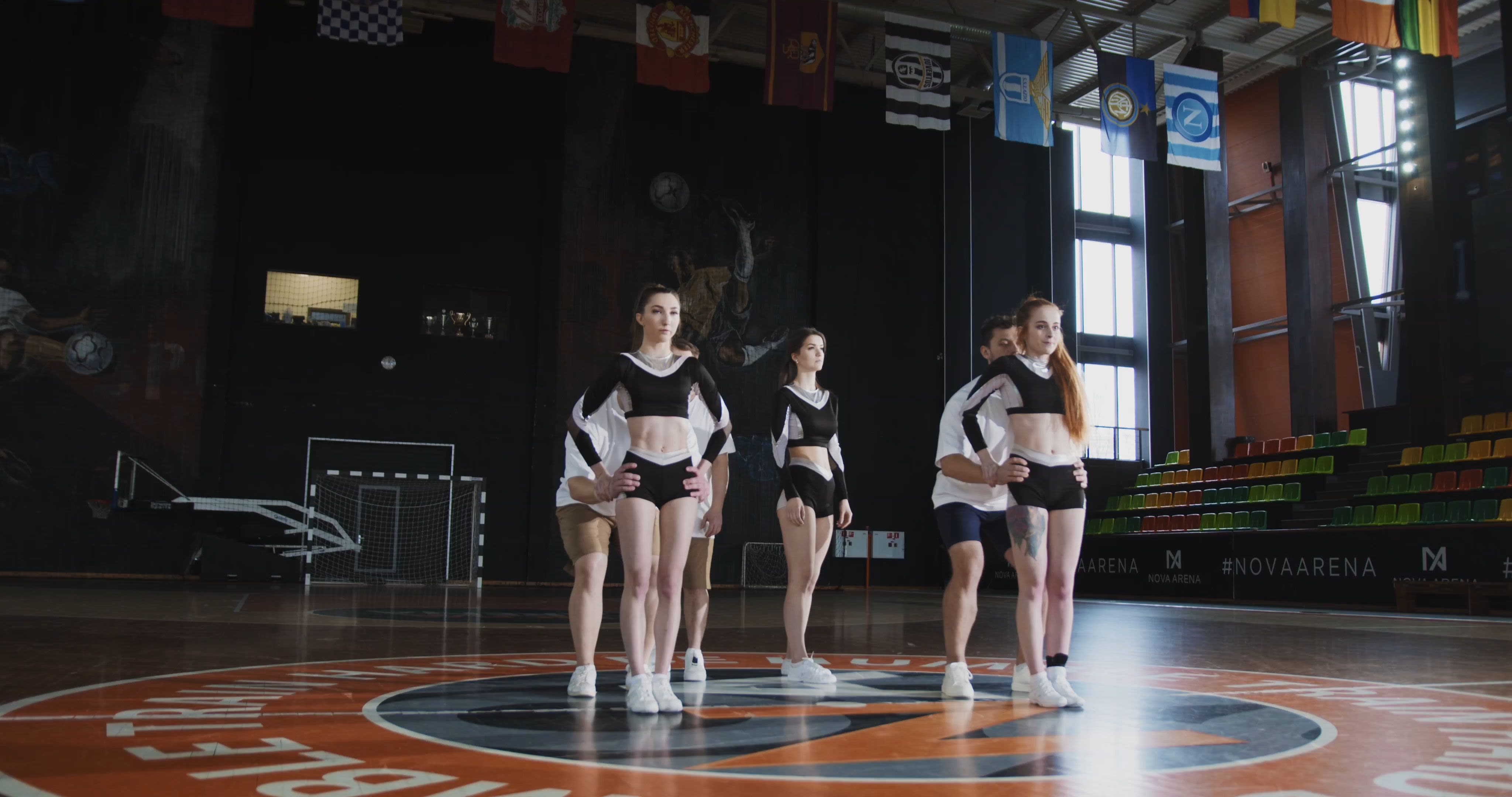Concussions in Cheerleading
Neuroscientist weighs in on the dangers cheerleaders face

As NCAA March Madness approaches the Sweet 16, basketball players aren't the only athletes gearing up for competition. Hundreds of cheerleaders put in 20-hour training weeks as they perform a hybrid of gymnastics, dance, and acrobatics with impeccable form and synchronicity. While these NCAA cheerleaders may not garner as many accolades as their peers on the court, a growing body of research suggests that the sport's grueling practices and gravity-defying stunts increase potential for head trauma and concussions. Research has shown that cheerleaders are at a higher risk of sustaining concussions than gymnasts and even football players, with 96 percent of head injuries in cheerleading occurring during stunts. Public awareness of concussions in cheerleading lags behind that of other sports, but the risks are constantly present for all participants.
“Although cheerleading is not generally considered a contact sport, there is still a lot of potential for injury,” said Brian Corbett, assistant professor of biology at Rutgers–Camden. “Pyramids, tumbling, and other key movements can cause some hard falls.”

Brian Corbett, assistant professor of biology
Brian Corbett, assistant professor of biology
Despite its reputation as a predominately female sport, cheerleading originated in the mid-1800s as an elite activity for men at Ivy League schools. As universities started admitting female students and men were drafted from college into military service during World War II, women began to take over, and the nature of the sport began to change.
While modern cheerleading—with its high-flying, acrobatic stunts—has evolved from pom-waving and spirited chants to increasingly complex feats of athletic ability, public perception has not kept pace. There is much debate, both in the media and the cheer world itself, about whether cheerleading should be classified as a sport. Because it is not recognized formally by the National Collegiate Athletic Association or Title IX guidelines, it is not bound to the same robust safety protocols as other designated sports.
“Helmets would help prevent concussions, but their lack of use in cheerleading is understandable,” Corbett said. “Helmets are cumbersome, cheerleading is not generally considered a contact sport, and aesthetics are regarded as important in cheerleading. “The inherent lack of use of protective gear makes cheerleaders more vulnerable to concussions.”
Female-dominated sports are vastly underrepresented in many aspects of sports medicine, and concussion research is no exception. Most studies guiding clinical care for sports-related concussions are derived from male data, which limits coaches’ ability to help female athletes prevent injury and achieve their athletic potential. This is especially concerning given that sports concussions are more prevalent and potentially more severe in women. Studies from U.S. collegiate sports have shown that female athletes are almost twice as likely to develop sports-related concussions than their male counterparts in comparable sports.
“Concussions are caused by sudden impacts to the head that jostle the brain around in the skull,” Corbett speculates. “Having stronger neck muscles might stabilize the head and help mitigate the effects of impact, thereby helping to prevent concussion.”








“Additionally,” he noted, “the menstrual cycle phase has been shown to impact recovery outcomes in females due to changes in hormonal level, specifically in the reduction of progesterone concentration after an injury, which subsequently leads to a withdrawal from its proposed neuroprotective properties.”
In other words, if women receive blows to the head during the luteal phase of their menstrual cycle, progesterone production slows to create a sense of withdrawal, worsening concussion symptoms such as headache, dizziness, and nausea.
In the short term, said Corbett, head injuries can lead to memory problems, impaired balance and coordination, and headaches. Head trauma can also cause a life-threatening brain bleed. When left unchecked, neuroinflammation can drive accumulation of tau protein. Over time, these “neurofibrillary tangles” in the brain can cause trouble with verbal communication, reasoning, and personality changes, as well as different types of dementia, including Alzheimer's disease.
Corbett recommends those injured assess their orientation, immediate memory, concentration, and delayed memory using the Standardized Assessment of Concussion (SAC) test and seek immediate medical care if they suspect a concussion.
Acknowledging these greater risks is a small first step toward closing the concussion gender gap and achieving equity in athletics. As cheerleading continues to be recognized as a true display of intense physical skill and garner respect from key athletic organizations, Corbett hopes to see more gender-specific prevention, diagnosis, and treatment protocols in place.
“Of course, wearing helmets would help,” he said. “I don't see that happening anytime soon during games, but wearing them at practice could help. Also, safety mats could be used, even at games.”


Creative Design: Beatris Santos